About this place
Some pinnacles reach up to 3.5m tall. Some are jagged, sharp-edged columns, rising to a point, while others resemble tombstones. There are features that provide clues to the origin of the Pinnacles which can be seen by the astute observer. For example, many pinnacles display cross-bedding structures, where the angle of deposition of the sand changes very abruptly. This indicates that the dunes, from which the limestone bed was formed, was originally laid down by the wind. Some pinnacles have a mushroom-like shape, due to remnants of a calcrete capping. The mushroom shape has formed because the capping is harder than the limestone below it and therefore weathers at a slower rate.
Parking bays are provided at various points along a one-way drive for those wishing to stop and explore the fascinating Pinnacles Desert on foot.
Please treat the pinnacles with respect and never climb on these fragile structures.
Safety information
Plan when to visit. Consider travelling with a personal location beacon (PLB). In the event you need to be rescued it could save your life!
Gallery
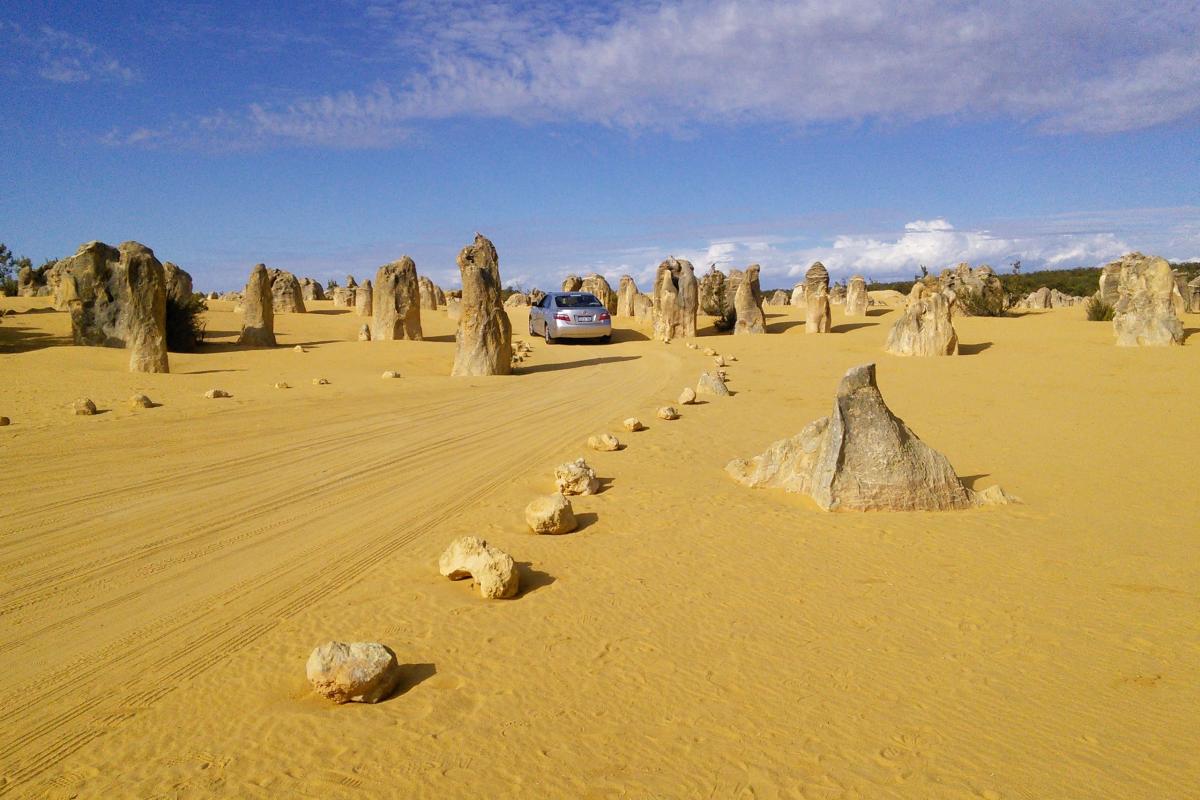
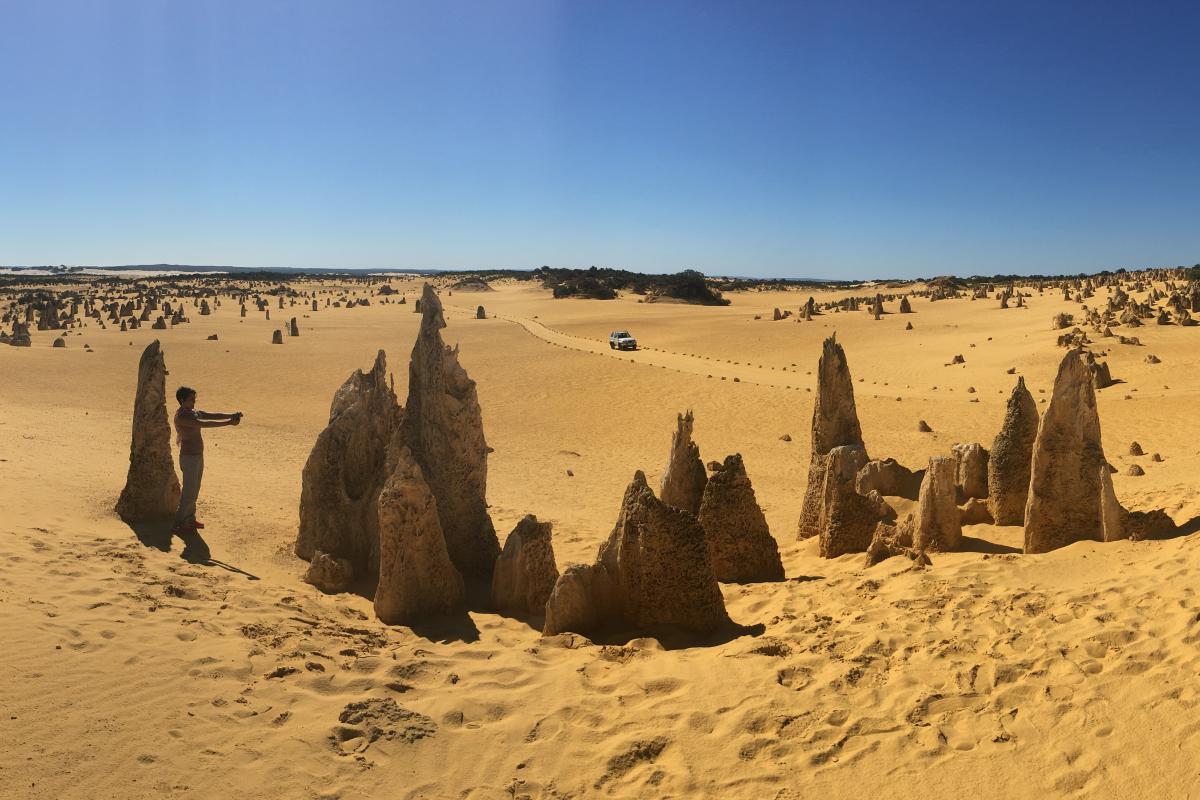
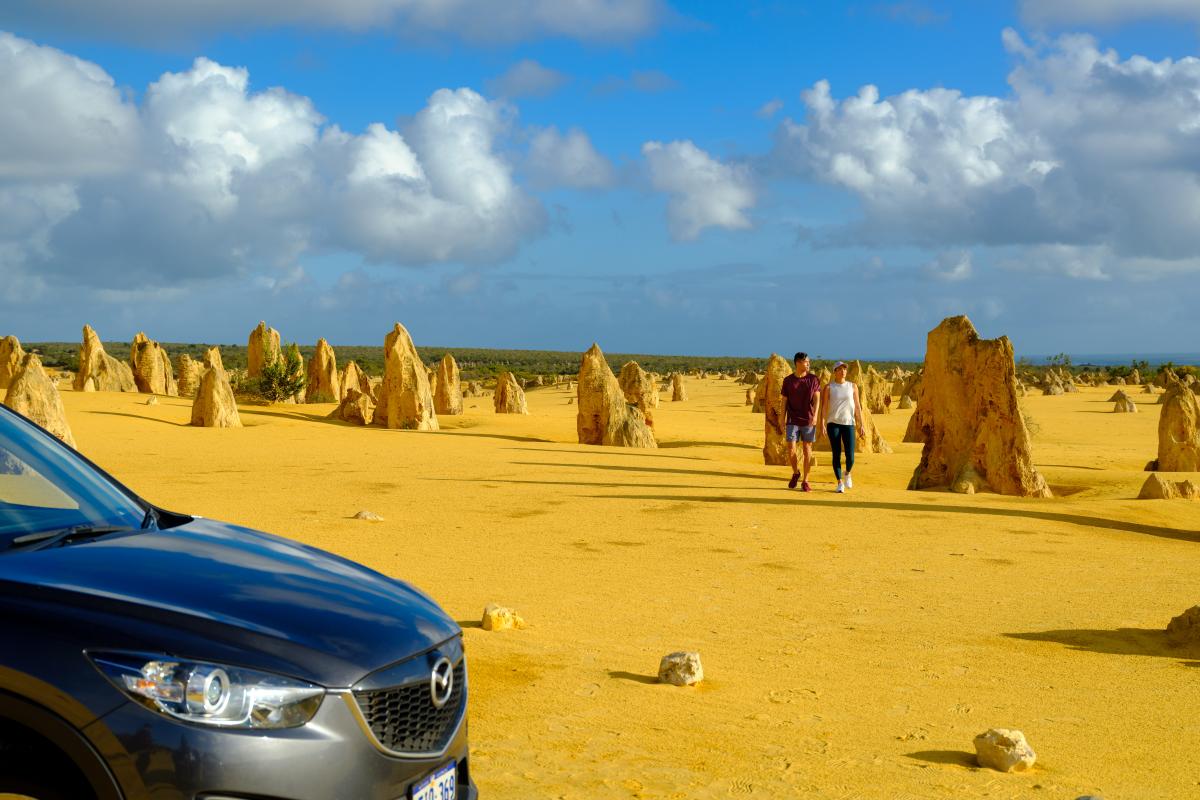
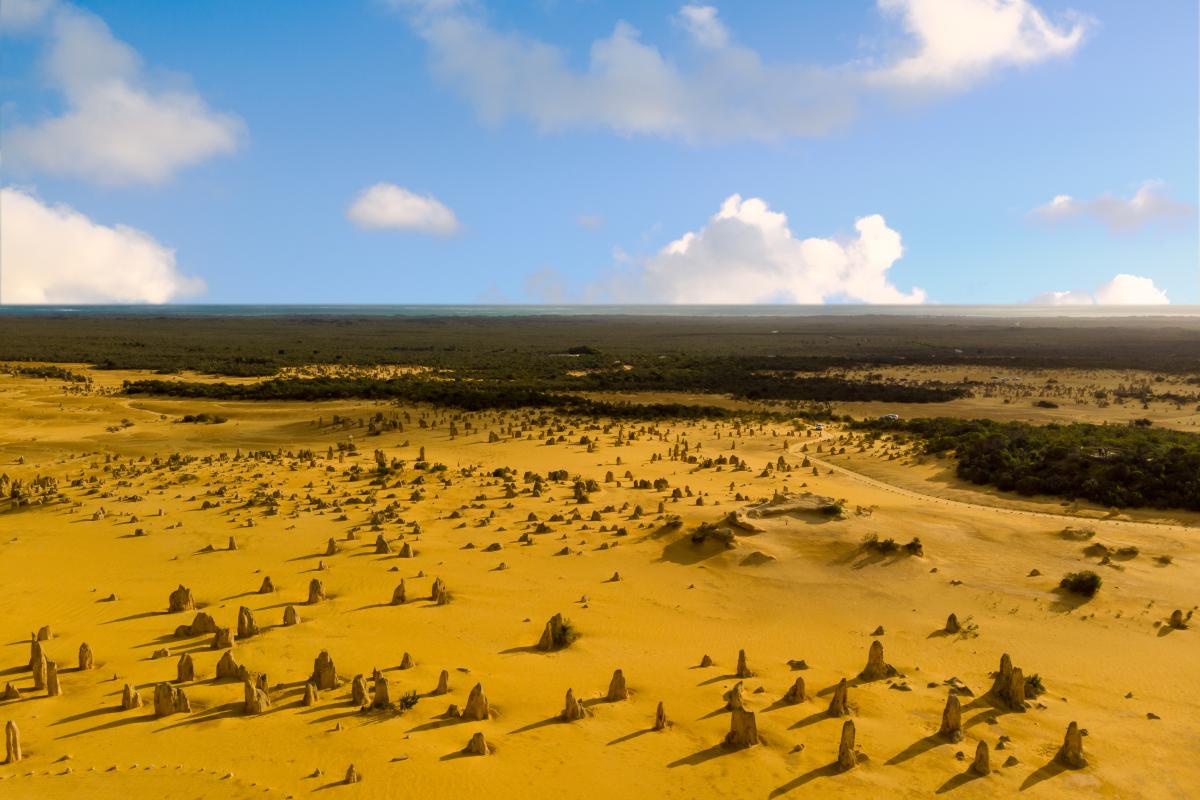
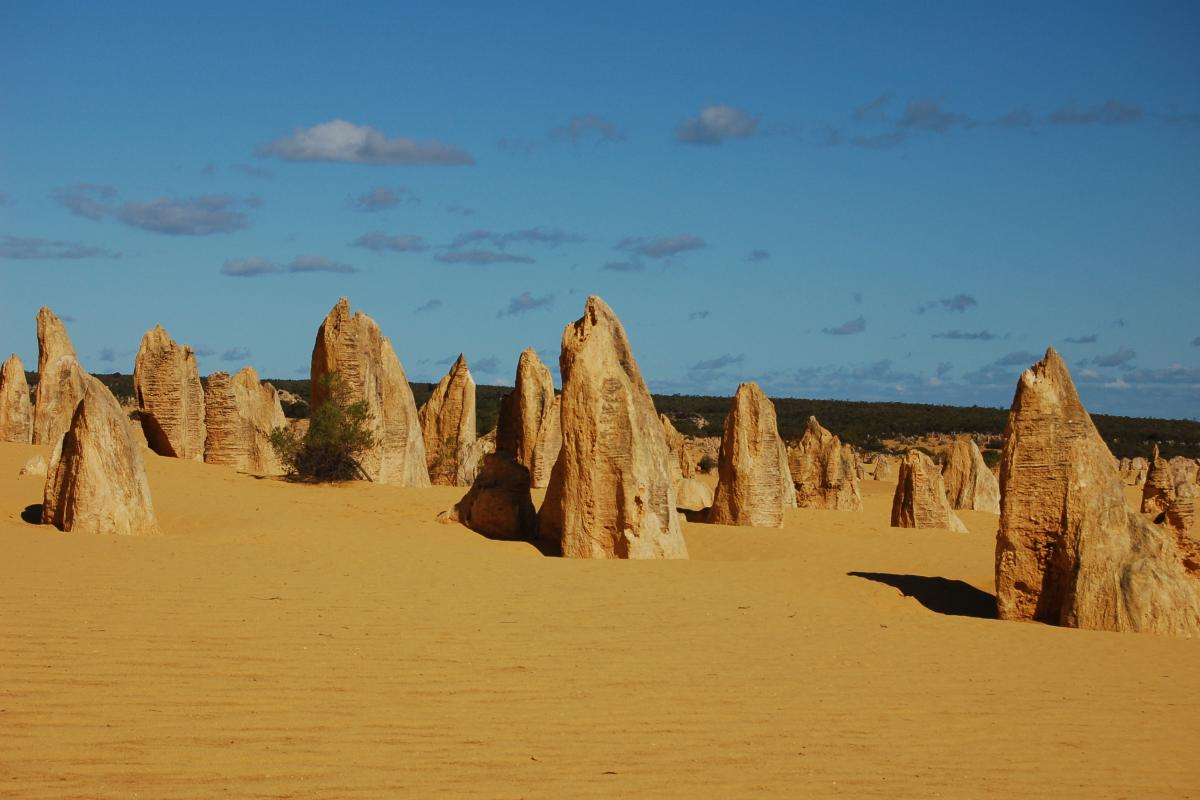
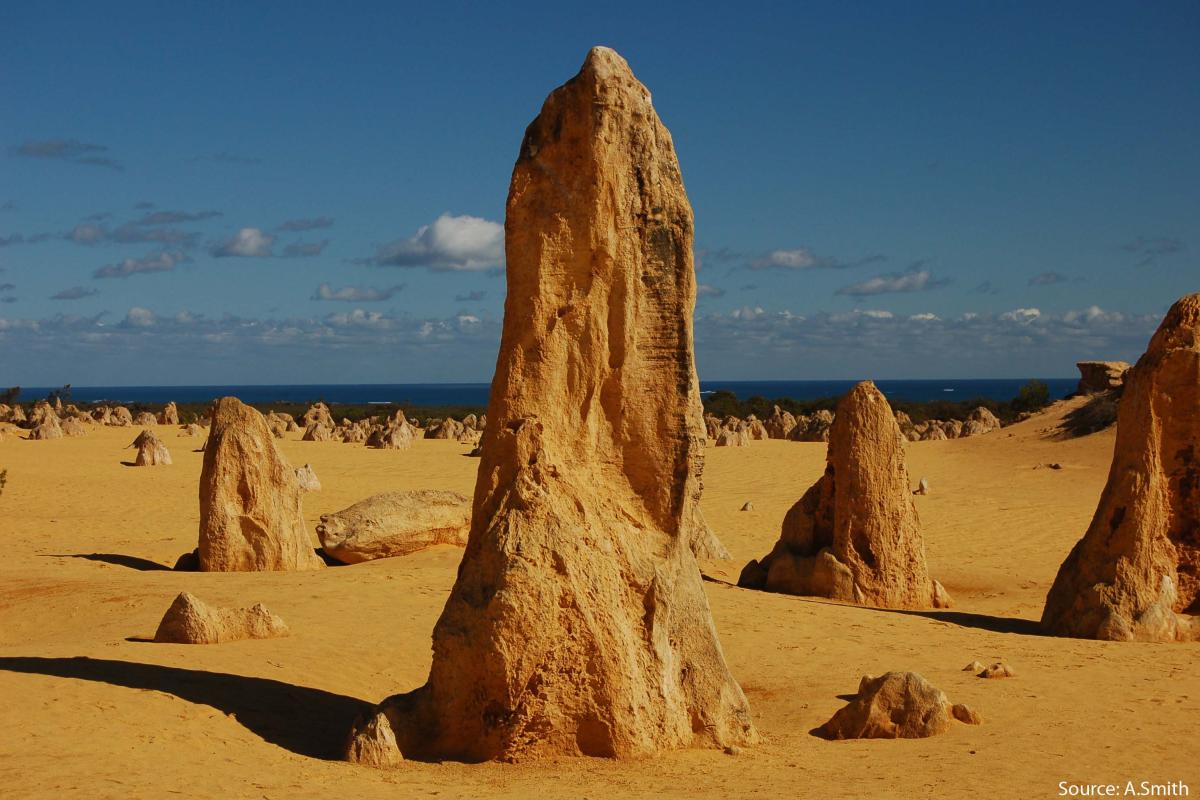
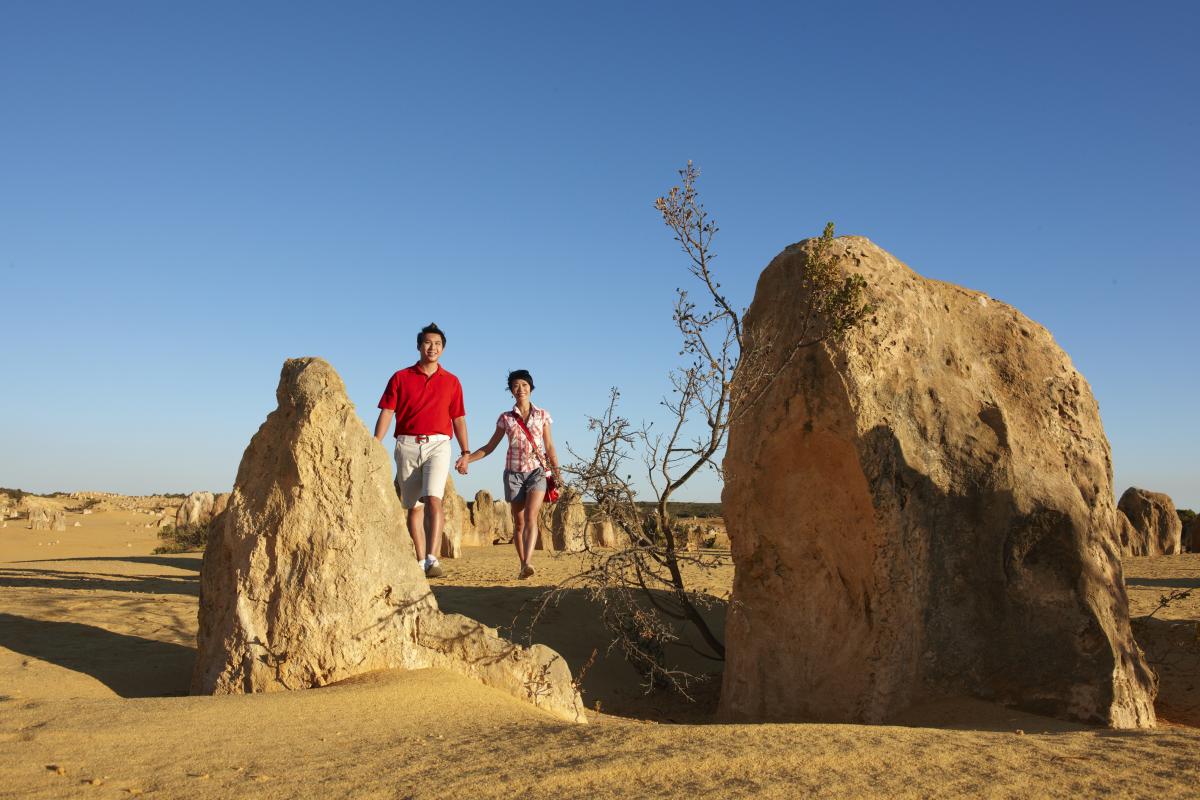
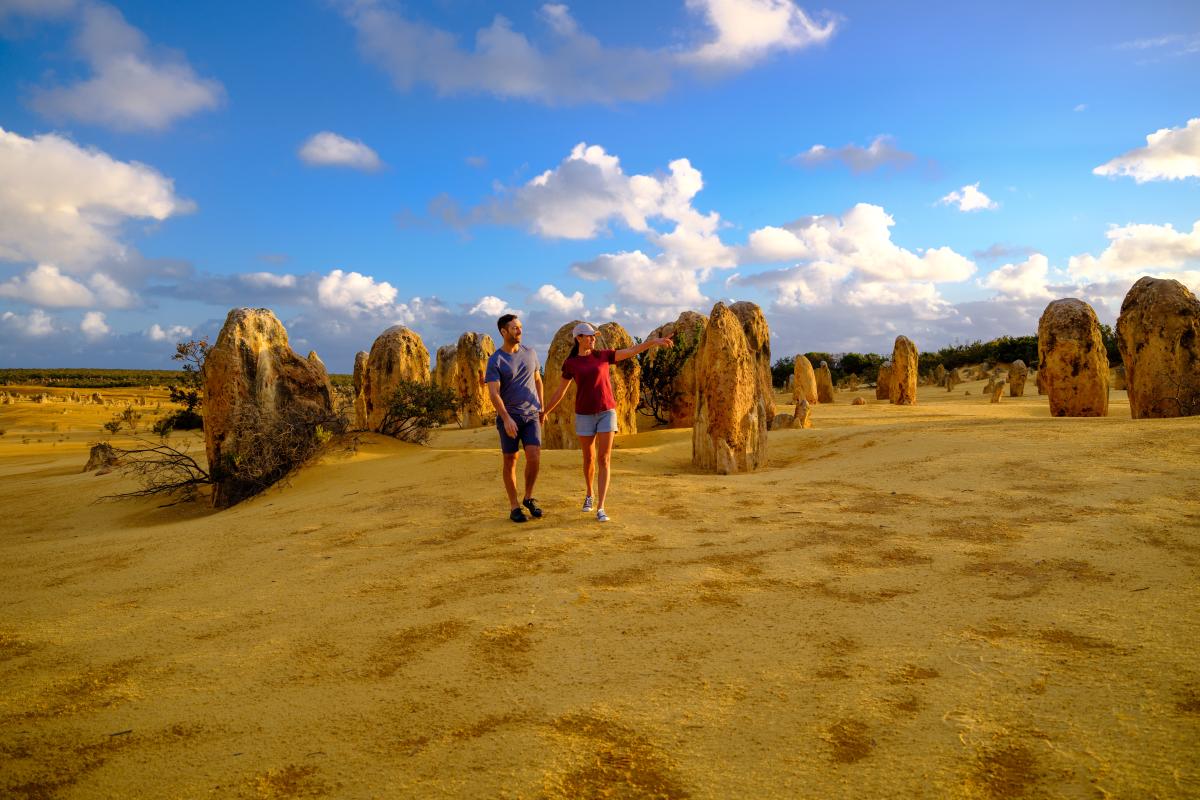
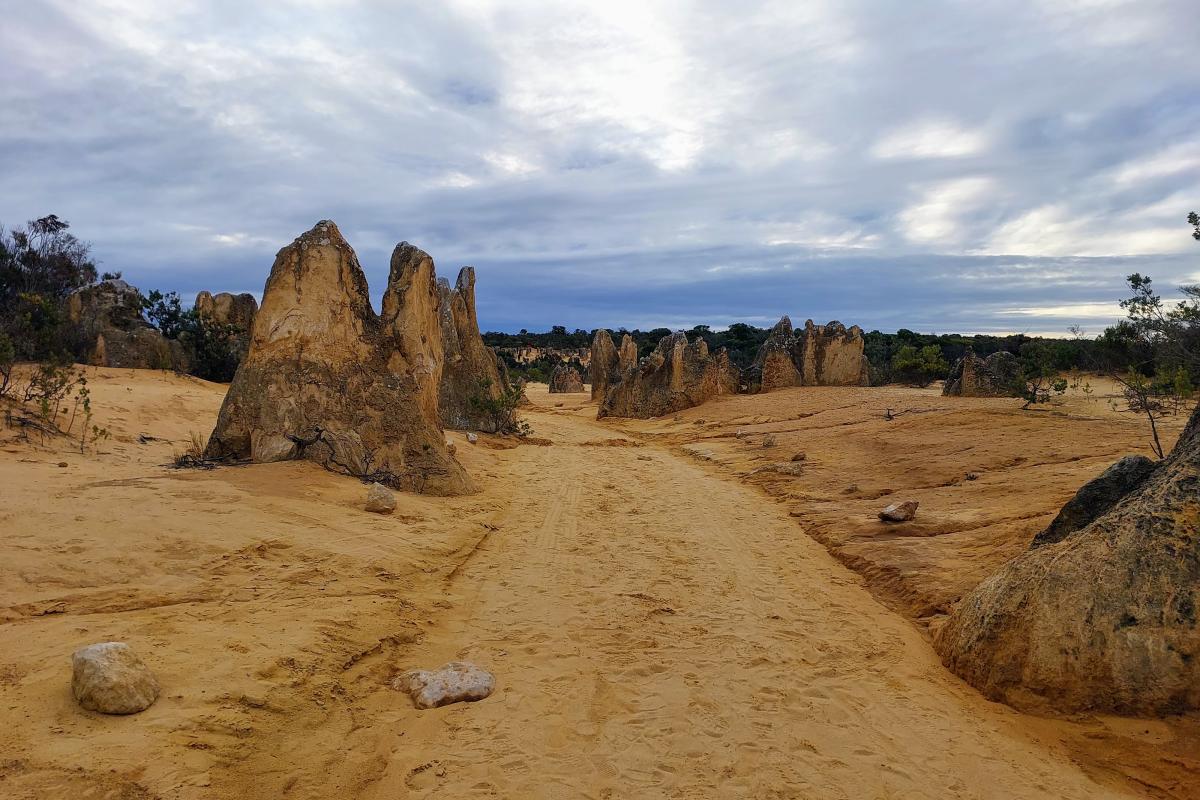

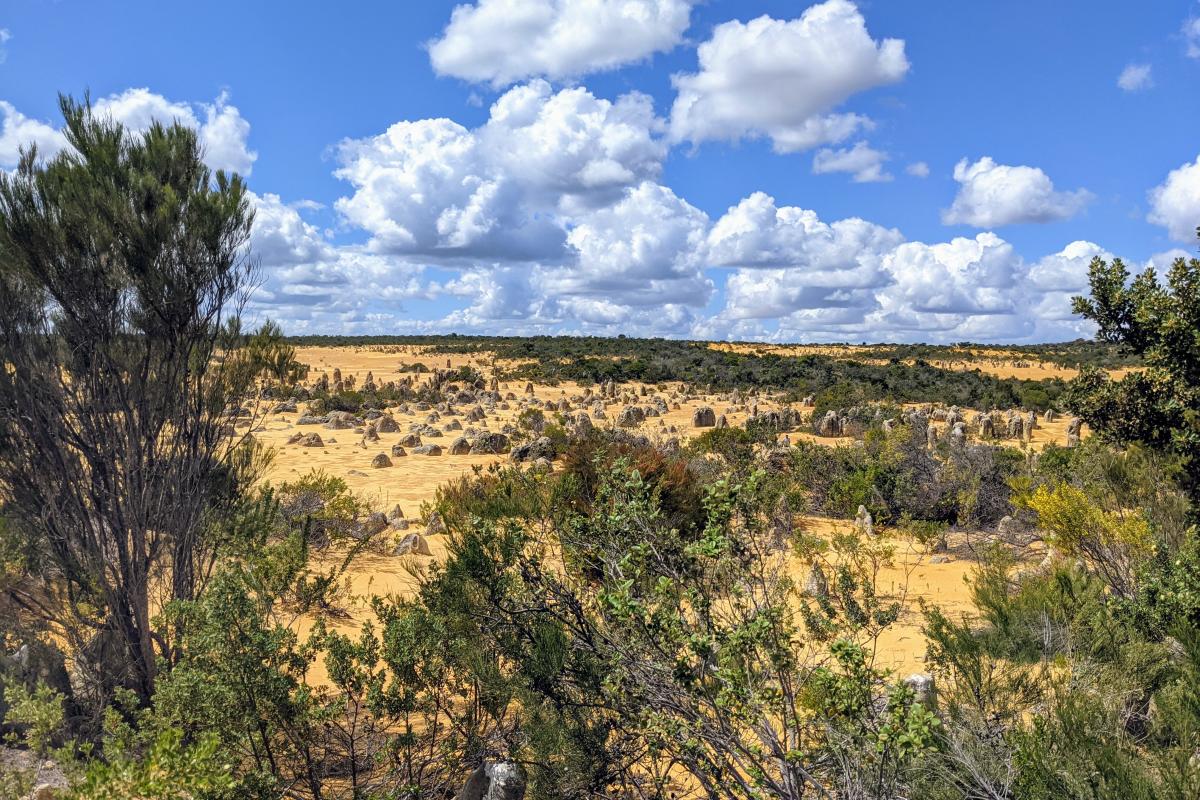
Facilities
Toilet
Plants, wildlife and fungi
Visit the Atlas of Living Australia for a list of species recorded within a 5km radius of Pinnacles Desert Lookout and Drive.
Traditional Owners
We recognise and acknowledge Yued people as the Traditional Owners of Nambung National Park.
